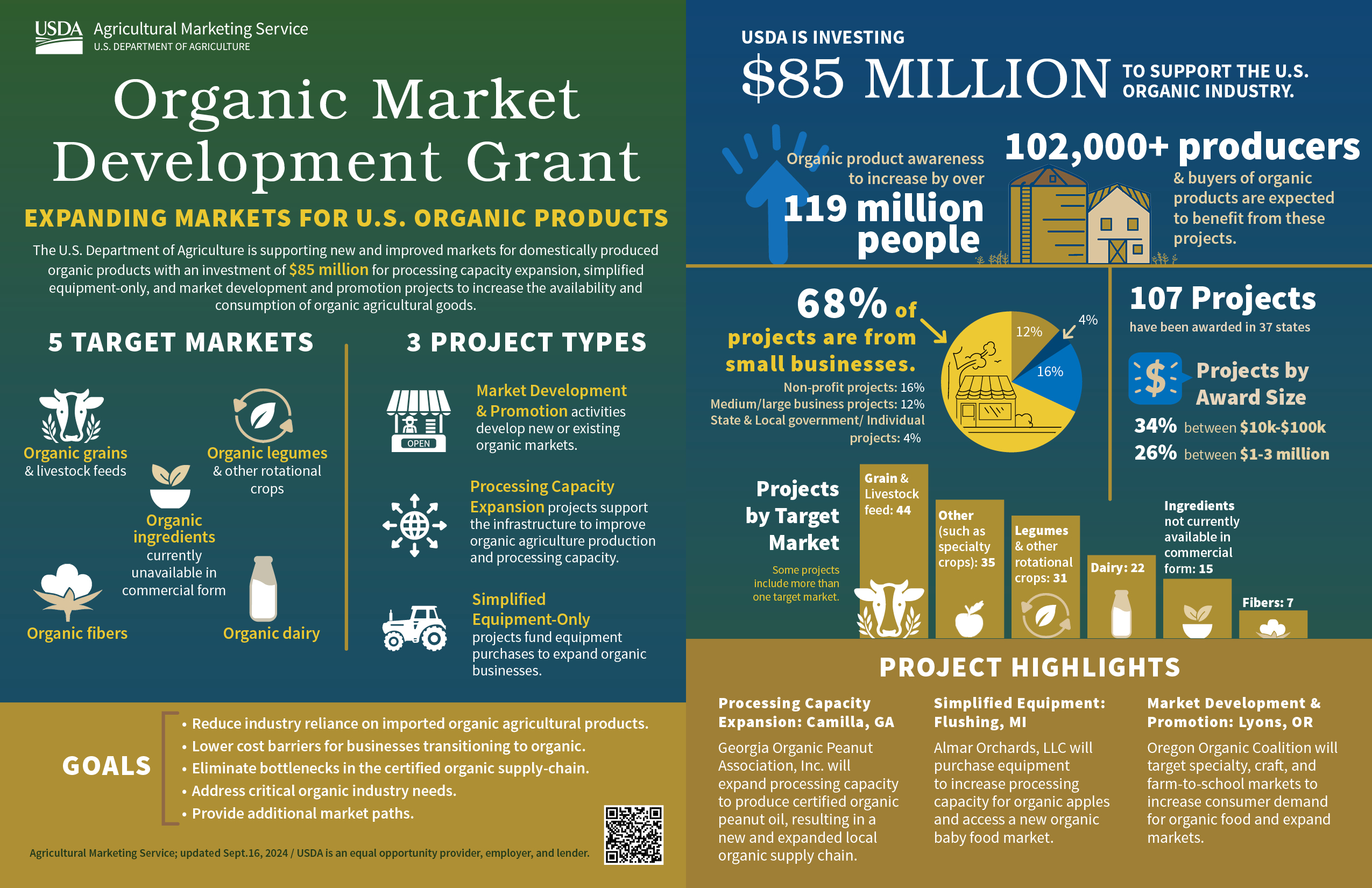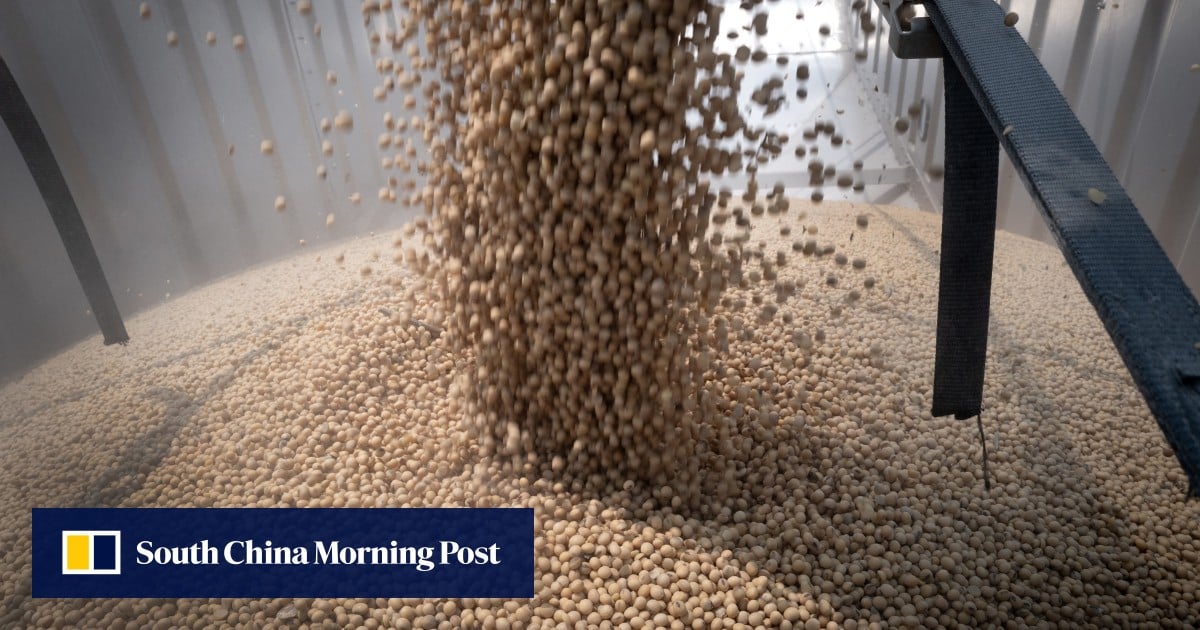Organic Agriculture – USDA (.gov)

Report on the U.S. Organic Agriculture Sector and its Contribution to Sustainable Development Goals
The United States organic agriculture sector has demonstrated significant growth since the 1990s, driven by robust consumer demand. This expansion reflects a broader shift towards sustainable practices that align with several United Nations Sustainable Development Goals (SDGs), particularly those concerning responsible consumption, economic growth, and environmental stewardship.
Market Growth and Economic Impact
Alignment with SDG 8 (Decent Work and Economic Growth)
The expansion of the organic market provides substantial economic incentives and opportunities for U.S. farmers, contributing directly to sustainable economic growth. The increase in certified organic operations indicates a growing and viable sector for agricultural employment and enterprise.
- Certified organic cropland increased by 79 percent to 3.6 million acres between 2011 and 2021.
- The number of certified organic farm operations grew by over 90 percent to 17,445 during the same period.
- Certified pastureland and rangeland decreased by 22 percent to 1.3 million acres from 2011 to 2021.
Sales Trends and Consumer Demand
Inflation-adjusted U.S. organic food sales have shown consistent growth, indicating a strong and sustained market. This growth is observed across multiple food categories and retail channels.
- Total organic food sales increased from an estimated $38.6 billion in 2012 to $65.4 billion in 2024 (inflation-adjusted to 2024 dollars).
- Fresh fruits and vegetables remain the largest category, with sales of $21.5 billion in 2021, representing 33 percent of total organic food sales in 2024.
- Organic milk production rose by 1 percent between 2019 and 2021, reaching 5.2 billion pounds.
- Conventional grocery stores, club stores, and supercenters are the primary retail outlets, accounting for 56 percent of organic food sales in 2020.
- The share of organic food sold via the internet has grown from 2 percent in 2012 to 6.7 percent in 2024.
Production, Consumption, and Pricing Dynamics
Contribution to SDG 12 (Responsible Consumption and Production)
The sustained demand for organic products demonstrates a significant shift in consumer patterns towards more sustainable options. This trend encourages production systems that are environmentally conscious, directly supporting the objectives of SDG 12.
Analysis of Price Premiums and Production Costs
Organic products command price premiums, which can offset the higher production costs associated with organic farming methods. These premiums are a key market-based mechanism for promoting sustainable agriculture.
- Production costs for U.S. organic farms are, on average, higher than for conventional farms.
- A 2004–2010 study found that retail price premiums for 17 of 18 organic products exceeded 20 percent over their conventional counterparts.
- While premiums for products like yogurt showed a steady increase, premiums for spinach, canned beans, and coffee decreased during the 2004-2010 period.
- In recent years, wholesale price premiums for certain products, including strawberries, spinach, and apples, have declined.
Consumer Demographics and Health Perceptions (SDG 3)
Consumer preference for organic food is often linked to perceived benefits for health and well-being, aligning with the aims of SDG 3. The broadening consumer base indicates that these values are becoming more mainstream.
- The organic consumer base is diverse and includes all demographic types.
- A 2016 study found that over 80 percent of U.S. households purchased organic food.
- Millennials show a higher propensity to purchase organic food compared to older generations.
- Key purchasing motivations include consumer views on personal health, environmental impact, and animal welfare.
Environmental and International Dimensions
Supporting SDG 15 (Life on Land) and SDG 2 (Zero Hunger)
Organic agricultural practices, which are designed to work in greater harmony with ecosystems, contribute to the sustainable management of land resources (SDG 15). By fostering resilient and sustainable food production systems, the organic sector also supports the long-term goals of achieving Zero Hunger (SDG 2).
The Role of International Trade in the Organic Market
International trade is integral to meeting domestic consumer demand and providing outlets for U.S. organic producers. The integrity of the organic supply chain is maintained through rigorous certification and international agreements.
- The tracked value of U.S. organic imports has steadily increased since 2011.
- Importers must be certified by the USDA or an entity under a recognized trade agreement.
- The United States maintains bilateral organic equivalency arrangements with key partners, including Canada, the European Union, Japan, Korea, Switzerland, Taiwan, and the United Kingdom.
- In 2021, the USDA terminated its recognition agreement with India due to concerns over the country’s organic control system.
Analysis of Sustainable Development Goals in the Article
1. Which SDGs are addressed or connected to the issues highlighted in the article?
-
SDG 2: Zero Hunger
- The article’s central theme is organic agriculture, a production system that directly relates to sustainable food production, which is a core component of achieving food security and ending hunger. The growth in organic cropland and farms points to a shift in agricultural practices.
-
SDG 8: Decent Work and Economic Growth
- The article provides extensive economic data on the organic sector, including sales figures, market growth, production costs, and price premiums. This highlights the role of organic agriculture as a high-value economic sector that contributes to economic growth. The increase in “certified operations” implies job creation and economic opportunities for farmers.
-
SDG 12: Responsible Consumption and Production
- This is the most prominent SDG in the article. The text details the “strong growth” in “consumer demand for organically produced goods,” which signifies a shift towards more sustainable consumption patterns. It also discusses the production side, such as the increase in certified organic acreage, which relates to sustainable production.
2. What specific targets under those SDGs can be identified based on the article’s content?
-
SDG 2: Zero Hunger
- Target 2.4: “By 2030, ensure sustainable food production systems and implement resilient agricultural practices that increase productivity and production… and that progressively improve land and soil quality.” The article’s focus on the expansion of certified organic agriculture, a system designed to be more sustainable and environmentally conscious, directly aligns with this target. The increase in “certified organic cropland acres” is a clear move towards implementing such agricultural practices.
-
SDG 8: Decent Work and Economic Growth
- Target 8.2: “Achieve higher levels of economic productivity through diversification… including through a focus on high-value added… sectors.” Organic agriculture is presented as a high-value-added sector. The article notes that “Organic price premiums remain high in many markets” and that “U.S. sales of organic food products… reached $65.4 billion in 2024,” demonstrating its significant economic contribution.
-
SDG 12: Responsible Consumption and Production
- Target 12.1: “Implement the 10-Year Framework of Programmes on Sustainable Consumption and Production Patterns…” The article’s description of rising consumer demand, where “more than 80 percent of U.S. households purchased organic food in 2016,” and the motivations of consumers (“views regarding health, the environment, and animal welfare”) illustrates a tangible shift in consumption patterns in a developed country.
- Target 12.a: “Support developing countries to strengthen their scientific and technological capacity to move towards more sustainable patterns of consumption and production.” The article mentions that the “United States has bilateral equivalency arrangements with Canada, the European Union, Japan, Korea, Switzerland, Taiwan, and the United Kingdom.” These international trade agreements on organic standards facilitate global trade and encourage other countries to adopt and certify to these sustainable production standards, thereby strengthening their capacity.
3. Are there any indicators mentioned or implied in the article that can be used to measure progress towards the identified targets?
-
For Target 2.4 (Sustainable food production systems):
- Indicator: Proportion of agricultural area under productive and sustainable agriculture.
- Data from Article: The article provides specific figures that can serve as this indicator: “certified organic cropland acres increased by 79 percent (to 3.6 million acres)” and “certified operations increased by more than 90 percent (to 17,445 farms) over the 2011–21 period.”
-
For Target 8.2 (Economic productivity in high-value sectors):
- Indicator: Value added by the organic agriculture sector.
- Data from Article: The article provides total retail sales value, which is a proxy for the sector’s economic contribution: “U.S. sales of organic food products… reached $65.4 billion in 2024.” The existence of “organic price premiums” also indicates higher value added compared to conventional products.
-
For Target 12.1 (Sustainable consumption patterns):
- Indicator: Market share and sales volume of sustainably produced goods.
- Data from Article: The article tracks the growth in organic sales over time, from “$38.6 billion in 2012… to $65.4 billion in 2024.” It also notes the market penetration, stating that “more than 80 percent of U.S. households purchased organic food in 2016.”
-
For Target 12.a (International cooperation):
- Indicator: Number of international agreements on sustainable production standards.
- Data from Article: The article explicitly lists the countries with which the U.S. has “bilateral equivalency arrangements,” including “Canada, the European Union, Japan, Korea, Switzerland, Taiwan, and the United Kingdom,” providing a quantifiable measure of international cooperation.
4. Summary Table of SDGs, Targets, and Indicators
| SDGs | Targets | Indicators (with data from the article) |
|---|---|---|
| SDG 2: Zero Hunger | 2.4: Ensure sustainable food production systems and implement resilient agricultural practices. |
|
| SDG 8: Decent Work and Economic Growth | 8.2: Achieve higher levels of economic productivity through a focus on high-value added sectors. |
|
| SDG 12: Responsible Consumption and Production |
12.1: Implement programmes on sustainable consumption and production patterns.
12.a: Support developing countries to strengthen capacity for sustainable production. |
|
Source: ers.usda.gov

What is Your Reaction?
 Like
0
Like
0
 Dislike
0
Dislike
0
 Love
0
Love
0
 Funny
0
Funny
0
 Angry
0
Angry
0
 Sad
0
Sad
0
 Wow
0
Wow
0
















































/environment-climate-change-and-health-(ech)/water-sanitation-hygiene-and-health-(wsh)/landfill-tuvalu-36092.tmb-1200v.jpg?sfvrsn=5c21fe40_1#)

.jpg.webp?itok=0ZsAnae9#)

























